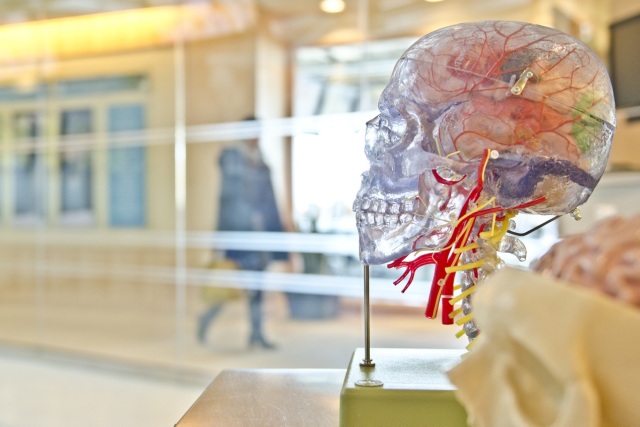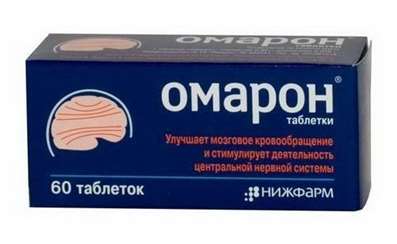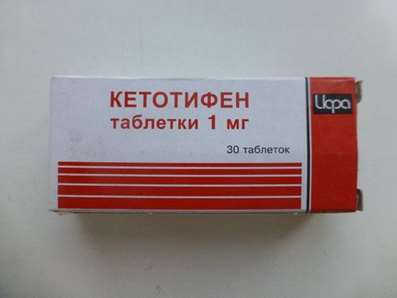Stroke: Causes and Symptoms
02 Nov 2016
What is the cause of the stroke, what symptoms to help recognize it and what methods of treatment practiced in modern medicine.
Stroke is an acute cerebrovascular accident, in which the die part of the brain. Depending on which particular area of the brain affected, stroke patient lost some brain function and cease to function various organs. There are two key kinds of stroke - ischemic and hemorrhagic. In an ischemic stroke patient is a "blockage" thrombus one of the arteries in the brain. This leads to the cessation of blood flow in arteries and gradual death of brain tissue located "downstream". In hemorrhagic stroke is bleeding in the brain due to violation of the integrity of the walls of blood vessels. This type of stroke is less common, but its consequences are usually disastrous.

In addition, cases of stroke occur, which combine a blockage of the arteries by a thrombus, and bleeding in the brain. As a result of a stroke indirectly violated the functions of those organs run by the affected brain cells. If the stroke affects motor neurons, their death results in the inability to perform movements, and subsequently - to muscle atrophy. If the affected area get the nerve cells, which manages the functions of the pelvic organs, there is dysfunction of the bladder and other organs. When a stroke is often violated it. stroke effects depend on what part of the brain damaged. Interestingly, since the neural pathways intersect, a stroke in the left hemisphere of the brain leads to the loss of limb function on the right side of the body and vice versa.
Causes of stroke
A key role in the development of ischemic stroke injury plays intima - the so-called endothelium. This damage causes the growth of atherosclerotic plaques - sealing intima inside the accumulation of lipids, especially cholesterol and its esters. Plaque silently maturing for many years, but at one point, which is very difficult to predict, it becomes very fragile tire (scientists call these unstable plaques). If the action is a factor that led to the destabilization of the plaque continues, sharply increases the risk of laceration of her shell, and then poured the contents of the plaque, and there is a blockage of the vessel. The main risk factor for plaque rupture - high blood pressure. Mechanisms strain of atherosclerotic plaques in stroke and myocardial infarction are similar, but there are some differences. Myocardial infarction plaque ruptures in a vessel of the heart, which is then plugged. Stroke can be caused by rupture of an atherosclerotic plaque, placed in one of the arteries in the brain, but often toil plaques that are found in the carotid arteries, ie much upstream, closer to the heart. The released when their anguish hazardous components are carried upstream, get to the brain and cause a blockage (thrombosis).
Under optimal mean arterial pressure 120 and the pressure below 70 mm Hg. Art. Pressure greater than 140 and 90 mm Hg. Art. - A sign of hypertension. The higher the pressure, the higher the risk of stroke. A person with a pressure greater than 170 and / or 110 mm Hg. Art., even though he is young, is at high risk of stroke. At the same time he can feel good, because its vessels adapted to this pressure. This fact greatly complicates the effective prevention of stroke - people in good physical shape with hardly believe that at one point can be profound disabilities.
Another mechanism of stroke, which is now often found - the so-called embolic stroke. This is an option for ischemic stroke, which occurs not because of the rupture of plaque in the cerebral vessel, and because of the fact that the vessel is sealed with a blood clot (embolus), departing from the cavities of the heart. In the so-called atrial fibrillation (atrial fibrillation), at which a chaotic contraction of the atria, they can form clots that can suddenly break away. After separation from the wall of the atrial thrombi migrate into the left ventricle, and from there - to the aorta, the aorta of - in the internal carotid artery and inside of fly into one of the arteries of the brain - often in midbrain. With such a mechanism is sealed vessel. The prevalence of atrial fibrillation is very high, it reaches up to 2% of the adult population, and the frequency progresses with age. In people older than 75 years, it can be observed in every fifth. (Meldonium and Mexidol could help to avoid it).
As for hemorrhagic stroke, the main reasons for its development are high blood pressure, and congenital or acquired lesion of the vascular wall. In hemorrhagic stroke may be a gap of vessels of a size, resulting in a large area of the brain is filled with blood. Blood can be poured under the lining of the brain, the brain squeezing from the outside, as well as get into the ventricles - the so-called brain water, which is located within the brain. When the vessel rupture and release large amounts of blood in certain brain cavity effects are usually more serious than in ischemic stroke. Mortality in hemorrhagic stroke is much higher.
It so happens that high blood pressure is imposed on congenital brain aneurysm (changes in the vascular wall, leading to dilatation, "spread" of vessels). A person can live a long time with congenital aneurysms, and if he has normal pressure, these deviations can not be reflected on health. But such an aneurysm can rupture at high blood pressure. This leads to the fact that the blood is poured into a large volume of the brain. In addition, an important role can play a bleeding disorder. If they are, they represent a danger, even seemingly safe medicines, especially against the background of high blood pressure. For example, aspirin may increase the risk of hemorrhagic stroke in patients with uncontrolled blood pressure patients.
Stroke Symptoms
The harbinger of stroke could be a sharp rise in blood pressure. Symptoms develop quickly enough. The most common of them - the speech disorder, gait, coordination, muscle weakness and falls. Violations of the motor areas correspond to the area of brain damage, who died due to occlusion of a particular artery. In addition, a range of motion is disturbed, you can see which artery is affected. In addition to the typical signs of a stroke, sometimes there are non-specific symptoms that occur when a large number of different diseases: the sudden sharp headache, nausea, vomiting, dizziness. Movement disorders and speech disorders usually appear rapidly after developing headache, and weakness.
Large strokes, in which a major artery clogged, almost always occur with a sharp decrease in motor activity and speech impairments. Such symptoms should not be confused with symptoms of other diseases. Small strokes, developing the so-called pool vertebra-basilar arteries that supply blood to areas of the brain responsible for balance, can only occur in small motor disorders, which are visible only neurologist. The patient in this case will feel sharp dizzy spells, wobble, nausea or headache.
Stroke Prevention
The stroke risk are people first of all with high blood pressure. Other hazards - smoking, high blood cholesterol levels (above 5.5 mmol / L), a bleeding disorder. Too rapid blood clotting - so-called congenital thrombophilia - can lead to ischemic stroke at a young age. And "bad" blood clotting is dangerous in terms of the risk of stroke, but its hemorrhagic version. Man with genetically caused bad blood clotting risks to move a stroke before the age of 30 years, often preceded by stress and, as a consequence, the blood pressure raising episode, which serves as a trigger factor for stroke.
Due to the low adherence to the prevention of many young people, especially men, do not know that they have a very high blood pressure. And in order to prevent a stroke, you need at least once every six months to measure blood pressure. If it is higher than 135/85 mm Hg. Art., it is necessary to consult a cardiologist. In addition, if a person knows that his immediate family had a stroke before the age of 60 years, then he needs to go through in-depth preventive care, in particular to check the blood clotting. People who abuse psychoactive drugs, alcohol and narcotic substances, are also stroke risk in young age.
In recent years, doctors are studying the link between stroke and migraine. Earlier in migraine treated as a relatively benign disease of unknown origin, but it is now clear that migraine - this is largely a vascular disease. When a stroke may develop severe migraine attacks. Due to the fact that the stroke takes place under the guise of a migraine, he risks being unrecognized in time, so patients who live with severe migraines, you need to take additional preventive measures. (Someone uses Meldonium and Mexidol for stroke prevention).
Stroke treatment
In case of ischemic stroke can restore blood flow in the vessel during the first 4.5 hours. To do this, enter the thrombolytic drug, which leads to the destruction of a thrombus. In this case, there are chances to prevent the death of brain cells when blockage of the artery. This is a fairly standard practice abroad, but in Russia it is rarely done: to take the risk to a patient with stroke thrombolytic drug, you need to have exceptionally high competence. Trying to dissolve the clot, can stimulate bleeding in the neighboring region of the brain, that is, eliminate the ischemic but cause more severe, hemorrhagic stroke in a nearby brain area. Therefore, according to Ministry of Health statistics, less than 1% of ischemic stroke treated with thrombolytic agents in Russia. Nevertheless, this preparation for the future. But if you miss 4.5 hours, then further administered drug is meaningless, because all the brain cells die already. After entering the drug should be a great period of rehabilitation.
One of the vectors of the treatment of stroke - the development of operational techniques by analogy with myocardial infarction. Carry out balloon dilatation and stenting of arteries in the brain is much more difficult than the arteries of the heart, because of their small caliber, tortuosity. In addition, brain cells die more rapidly heart cells, and the operation time is considerably less.
Rehabilitation after stroke
In modern medicine, there are reliable methods of rehabilitation after a stroke. Properly structured rehabilitation can cause adjacent parts of the brain take over the function of dead cells. To do this, select the correct motor mode, drug therapy, speech therapy and the use of neuropsychological approaches. Neurorehabilitation - this is a very complex and expensive teamwork. About 90% of patients with ischemic stroke are more successful after several months of well-built rehabilitation.
The situation with hemorrhagic stroke is more severe. The possibilities of rehabilitation in such a stroke less, but these patients can be helped - at least to ensure that they can communicate with other people and be seen at home.
The most severe patients - those who have suffered a severe hemorrhagic stroke and is in a coma. These patients usually die cerebral cortex, which is the substratum of the personality. In this case, the ability to recover much less. But science there are cases where patients regaining consciousness after a long coma, because some areas of the cerebral cortex were still alive. In the case of the treatment of severe stroke, it is necessary to ask the opinion of a second doctor. To make decisions, it is important to understand the amount of damage. If struck by all the cerebral cortex and subcortical nuclei, the doctors honestly say that the possibility of recovery, alas, no. But if certain areas of the cerebral cortex (the departments that are responsible for our consciousness, for motor functions) live, it may be possible to recover consciousness when properly structured neuro-rehabilitation. Everything depends on the level of the lesion, the degree of severity of the events that took place at an early stage.
Every year in Russia ill stroke from 500 to 700 thousand people. The death rate from stroke is approximately 300 thousand people per year. During the year, about half die of stroke patients, and 90% remain profound disabilities.

 Cart
Cart





